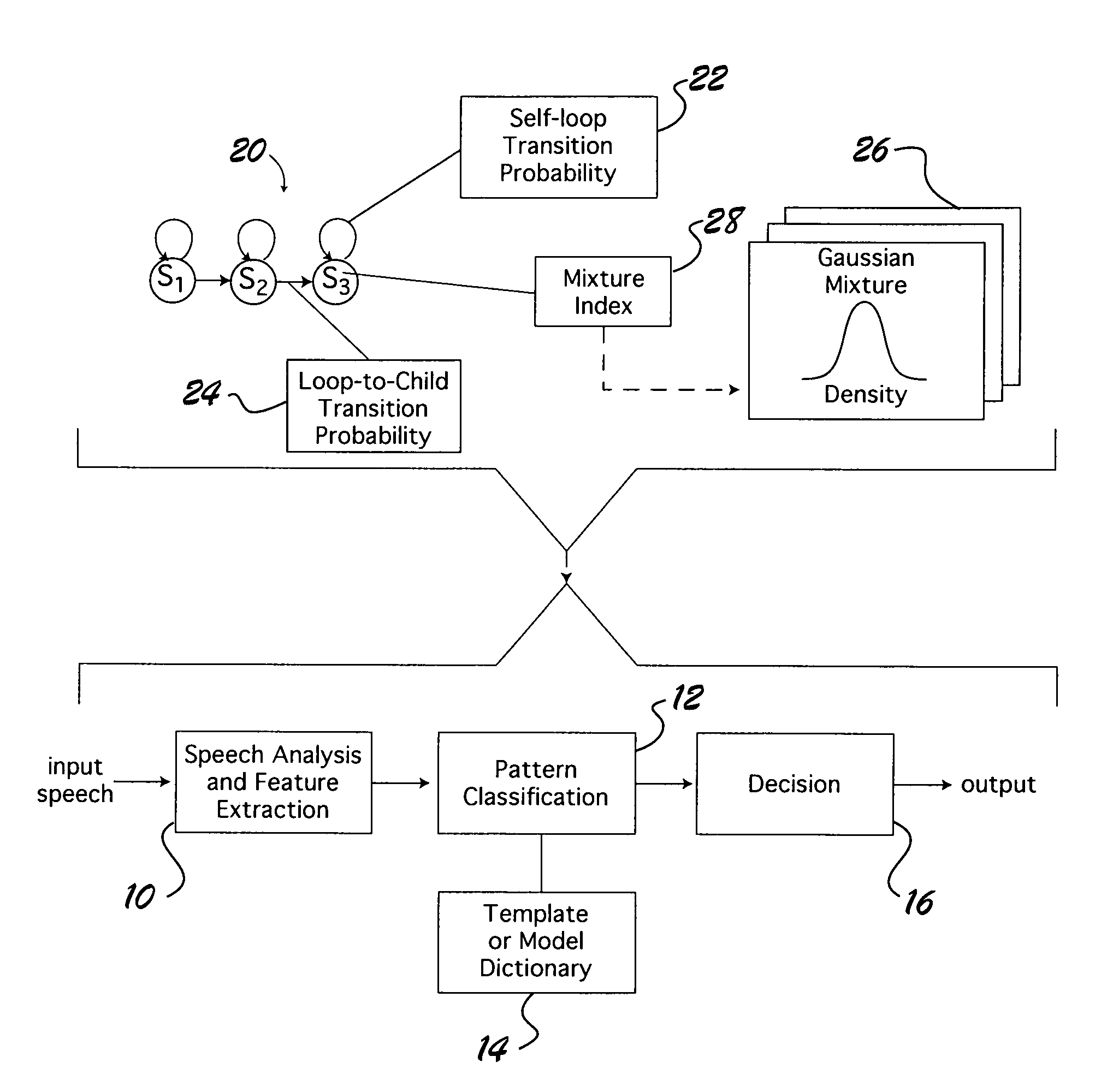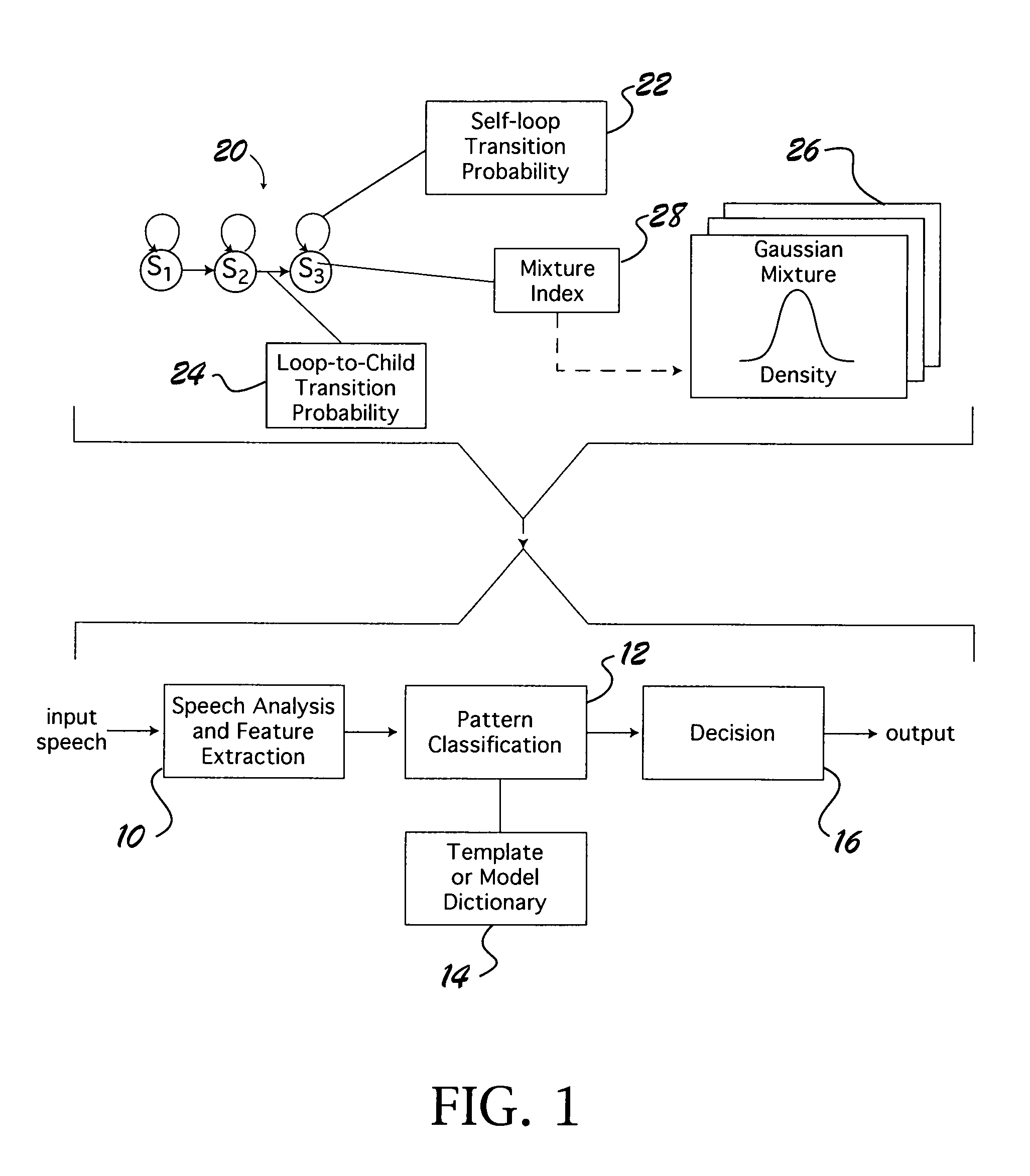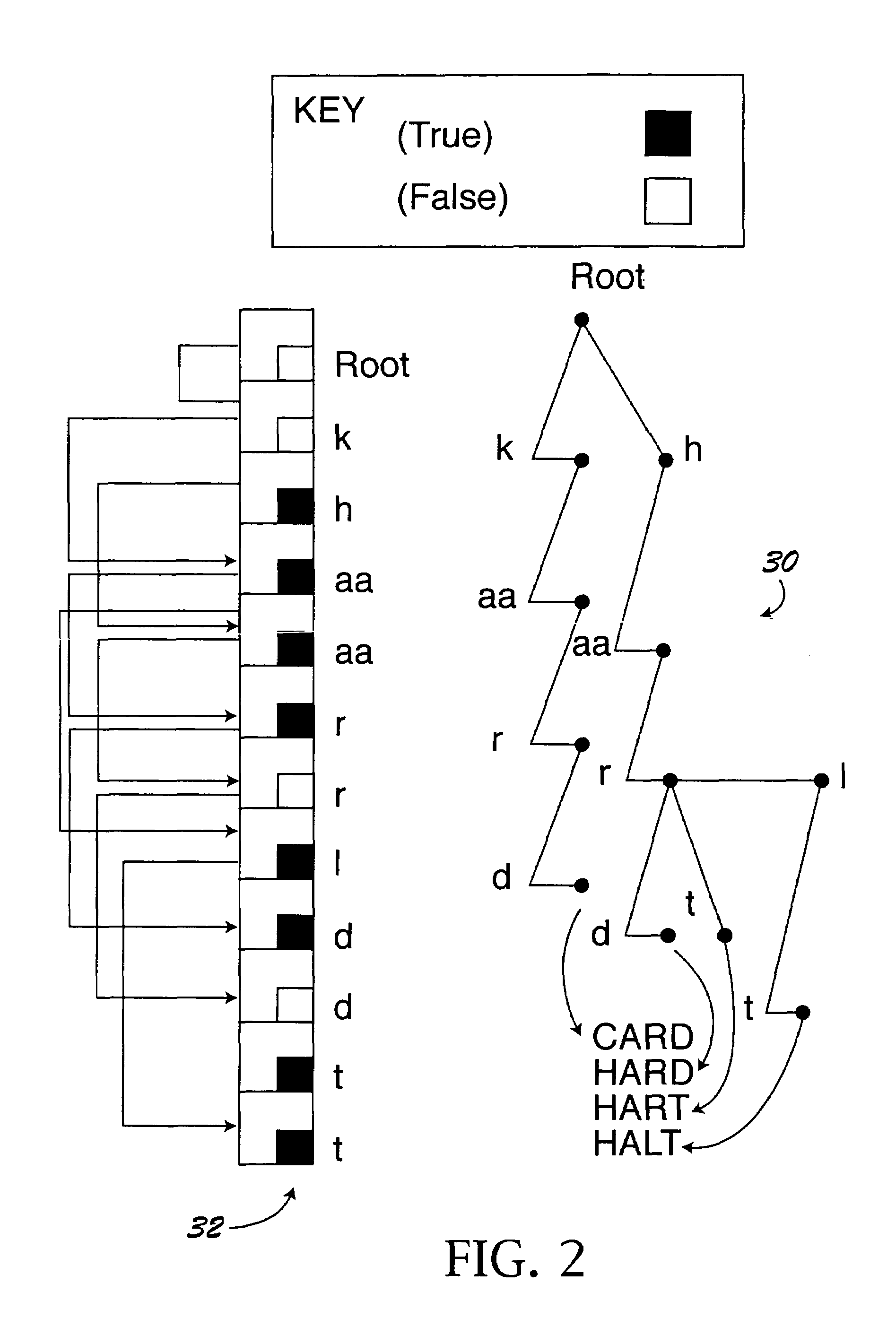Recognition system using lexical trees
a recognition system and lexical tree technology, applied in speech recognition, speech analysis, instruments, etc., can solve the problems of real-time systems, noticeably slowing down the apparent speed of speech recognizers, computationally expensive classic viterbi algorithms, etc., to improve recognition speed, improve performance, and process power
- Summary
- Abstract
- Description
- Claims
- Application Information
AI Technical Summary
Benefits of technology
Problems solved by technology
Method used
Image
Examples
Embodiment Construction
[0016]Background
[0017]FIG. 1 illustrates an exemplary speech recognition system. The system operates in two phases: a training phase, during which the system learns the reference patterns representing the different speech sounds (e.g., phrases, words, phones) that constitute the vocabulary of the application; and a recognition phase, during which an unknown input pattern is identified by considering the set of references. During the training phase each reference is learned from spoken examples and stored either in the form of templates obtained by some averaging method (in template-matching systems) or models that characterize the statistical properties of patterns (like in stochastic systems). One of the most popular stochastic systems utilizes a statistical modeling approach employing Hidden Markov Models (HMM).
[0018]As illustrated in FIG. 1, the exemplary speech recognizer performs the recognition process in three steps. As depicted at 10, speech analysis and feature extraction i...
PUM
 Login to View More
Login to View More Abstract
Description
Claims
Application Information
 Login to View More
Login to View More - R&D
- Intellectual Property
- Life Sciences
- Materials
- Tech Scout
- Unparalleled Data Quality
- Higher Quality Content
- 60% Fewer Hallucinations
Browse by: Latest US Patents, China's latest patents, Technical Efficacy Thesaurus, Application Domain, Technology Topic, Popular Technical Reports.
© 2025 PatSnap. All rights reserved.Legal|Privacy policy|Modern Slavery Act Transparency Statement|Sitemap|About US| Contact US: help@patsnap.com



